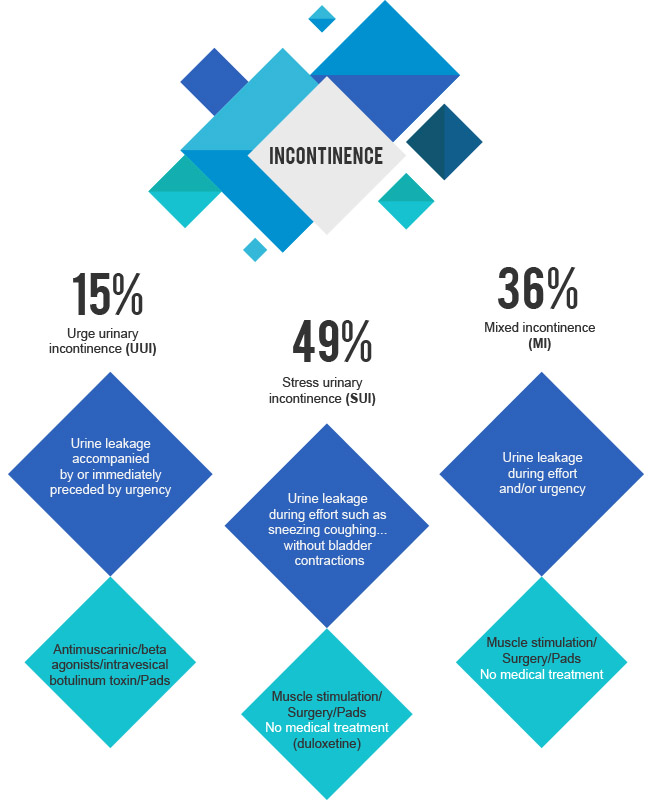Genito-urinary diseases
Urinary Incontinence
Urinary Incontinence (UI) is defined by the International Continence Society as the complaint of any involuntary leakage of urine (Abrams et al., 2002).
UI exists in different forms:
- Urinary Incontinence is “the complaint of any involuntary leakage of urine”.
- Stress Urinary Incontinence is “the complaint of involuntary leakage on effort or exertion, or on sneezing or coughing”.
- Urge Urinary Incontinence is “the complaint of involuntary leakage accompanied by or immediately preceded by urgency“.
- Mixed Urinary Incontinence is “the complaint of involuntary leakage associated with urgency and also with exertion, or on sneezing or coughing”.
- Overactive bladder (OAB) is defined as “urgency, with or without urge incontinence, usually with frequency and nocturia, in the absence of infection or other proven aetiology”.
- Wet overactive bladder (OAB) includes “urge and mixed Urinary Incontinence”; while dry OAB is defined as “urge and frequency without incontinence episodes of UUI, SUI, MUI”, according to the ICS.
While not lifethreatening, Urinary Incontinence is a significant medical problem that affects a large population of male and female patients, significantly impairing their quality of life, and is as of today less than satisfactorily addressed by available therapies, both medical and surgical. In particular, there is no approved drug treatment for mixed Urinary Incontinence worldwide.
Urinary Incontinence at age of 45 occurs in a very high percentage particularly in women (20-40%).
Stress incontinence decreases with age, and urge incontinence increases with age.

Urinary Incontinence is a high prevalence/high medical need disease area.
Despite efforts over the past 20 years to educate patients and health care providers alike about bladder health, many still believe that UI is a normal part of the aging process. Thus, considerable numbers of adults with UI suffer in silence and never seek or receive treatment (Ko et al., 2005), unnecessarily resulting in physical, psychosocial, and economic tolls on affected individuals, their loved ones, and their caregivers. The ambition of Ixaltis is to bring a solution to these patients in the form of an effective and well tolerated drug.

